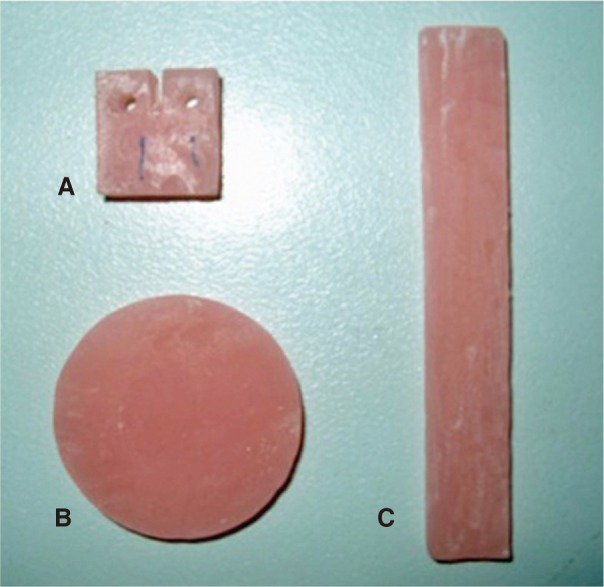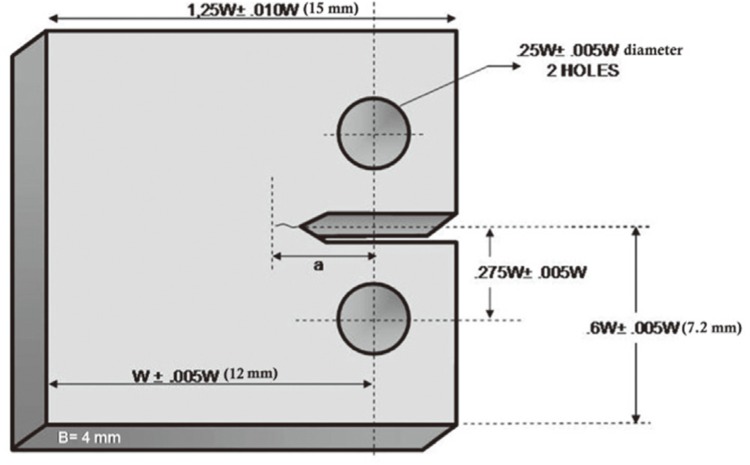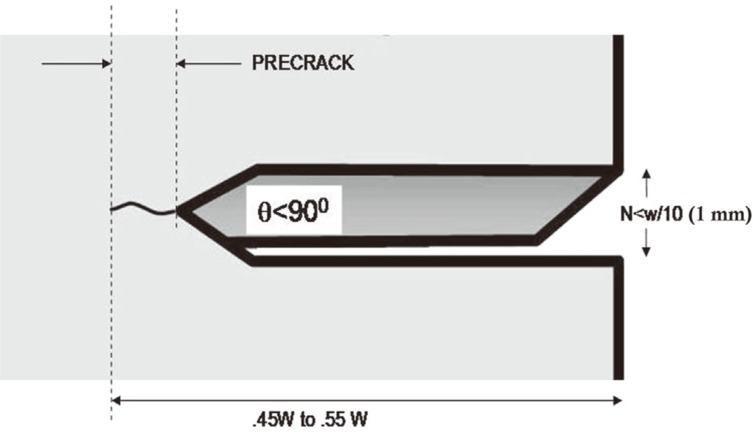J Adv Prosthodont.
2013 Aug;5(3):241-247. 10.4047/jap.2013.5.3.241.
Influence of various metal oxides on mechanical and physical properties of heat-cured polymethyl methacrylate denture base resins
- Affiliations
-
- 1Department of Comprehensive Dentistry, Dental School, University of Texas Health Science Center at San Antonio, Texas, USA. nvolkan@gazi.edu.tr
- 2Private Practice, Sakarya, Turkey.
- 3Department of Prosthodontics, Dental School, Gazi University, Ankara, Turkey.
- 4Implant Clinic, Department of Comprehensive Dentistry, University of Texas Health Science Center at San Antonio, Texas, USA.
- KMID: 2118162
- DOI: http://doi.org/10.4047/jap.2013.5.3.241
Abstract
- PURPOSE
To evaluate the effect of various metal oxides on impact strength (IS), fracture toughness (FT), water sorption (WSP) and solubility (WSL) of heat-cured acrylic resin.
MATERIALS AND METHODS
Fifty acrylic resin specimens were fabricated for each test and divided into five groups. Group 1 was the control group and Group 2, 3, 4 and 5 (test groups) included a mixture of 1% TiO2 and 1% ZrO2, 2% Al2O3, 2% TiO2, and 2% ZrO2 by volume, respectively. Rectangular unnotched specimens (50 mm x 6.0 mm x 4.0 mm) were fabricated and droptower impact testing machine was used to determine IS. For FT, compact test specimens were fabricated and tests were done with a universal testing machine with a cross-head speed of 5 mm/min. For WSP and WSL, discshaped specimens were fabricated and tests were performed in accordance to ISO 1567. ANOVA and Kruskal-Wallis tests were used for statistical analyses.
RESULTS
IS and FT values were significantly higher and WSP and WSL values were significantly lower in test groups than in control group (P<.05). Group 5 had significantly higher IS and FT values and significantly lower WSP values than other groups (P<.05) and provided 40% and 30% increase in IS and FT, respectively, compared to control group. Significantly lower WSL values were detected for Group 2 and 5 (P<.05).
CONCLUSION
Modification of heat-cured acrylic resin with metal oxides, especially with ZrO2, may be useful in preventing denture fractures and undesirable physical changes resulting from oral fluids clinically.
MeSH Terms
Figure
Cited by 1 articles
-
Effects of incorporation of 2.5 and 5 wt% TiO2 nanotubes on fracture toughness, flexural strength, and microhardness of denture base poly methyl methacrylate (PMMA)
Sahar Abdulrazzaq Naji, Marjan Behroozibakhsh, Tahereh Sadat Jafarzadeh Kashi, Hossein Eslami, Reza Masaeli, Hosseinali Mahgoli, Mohammadreza Tahriri, Mehrsima Ghavvami Lahiji, Vahid Rakhshan
J Adv Prosthodont. 2018;10(2):113-121. doi: 10.4047/jap.2018.10.2.113.
Reference
-
1. Darbar UR, Huggett R, Harrison A. Denture fracture-a survey. Br Dent J. 1994; 176:342–345. PMID: 8024869.
Article2. Jagger DC, Harrison A, Jandt KD. The reinforcement of dentures. J Oral Rehabil. 1999; 26:185–194. PMID: 10194725.
Article3. Meng TR Jr, Latta MA. Physical properties of four acrylic denture base resins. J Contemp Dent Pract. 2005; 6:93–100. PMID: 16299611.4. Kanie T, Fujii K, Arikawa H, Inoue K. Flexural properties and impact strength of denture base polymer reinforced with woven glass fibers. Dent Mater. 2000; 16:150–158. PMID: 11203537.
Article5. Knott NJ. The durability of acrylic complete denture bases in practice. Quintessence Int. 1989; 20:341–343. PMID: 2756090.6. Ruffino AR. Effect of steel strengtheners on fracture resistance of the acrylic resin complete denture base. J Prosthet Dent. 1985; 54:75–78. PMID: 3894643.
Article7. Teraoka F, Nakagawa M, Takahashi J. Adaptation of acrylic dentures reinforced with metal wire. J Oral Rehabil. 2001; 28:937–942. PMID: 11737565.
Article8. Goldberg AJ, Burstone CJ. The use of continuous fiber reinforcement in dentistry. Dent Mater. 1992; 8:197–202. PMID: 1387855.
Article9. Sehajpal SB, Sood VK. Effect of metal fillers on some physical properties of acrylic resin. J Prosthet Dent. 1989; 61:746–751. PMID: 2724170.
Article10. Zuccari AG, Oshida Y, Moore BK. Reinforcement of acrylic resins for provisional fixed restorations. Part I: Mechanical properties. Biomed Mater Eng. 1997; 7:327–343. PMID: 9457383.11. Miettinen VM, Vallittu PK, Docent DT. Water sorption and solubility of glass fiber-reinforced denture polymethyl methacrylate resin. J Prosthet Dent. 1997; 77:531–534. PMID: 9151274.
Article12. Phoenix RD. Denture base resins: technical considerations and processing techniques. In : Anusavice KJ, editor. Phillip's Science of Dental Materials. 11th ed. St. Louis: Saunders WB Company;2003. p. 721–756.13. Fujii K. Fatigue properties of acrylic denture base resins. Dent Mater J. 1989; 8:243–259. PMID: 2490598.
Article14. O'Brien WJ. Dental materials and their selection. 3rd ed. IL: Quinttessence Pub Co;2002. p. 1–11.15. ISO 1567:1999. Dentistry-Denture base polymers. Geneva: International Organization for Standardization;1999.16. Cucci AL, Vergani CE, Giampaolo ET, Afonso MC. Water sorption, solubility, and bond strength of two autopolymerizing acrylic resins and one heat-polymerizing acrylic resin. J Prosthet Dent. 1998; 80:434–438. PMID: 9791790.
Article17. Vallittu PK, Lassila VP. Reinforcement of acrylic resin denture base material with metal or fibre strengtheners. J Oral Rehabil. 1992; 19:225–230. PMID: 1500965.
Article18. Caycik S, Jagger RG. The effect of cross-linking chain length on mechanical properties of a dough-molded poly (methylmethacrylate) resin. Dent Mater. 1992; 8:153–157. PMID: 1521701.19. Yilmaz C, Korkmaz T. The reinforcement effect of nano and microfillers on fracture toughness of two provisional resin materials. Mater Des. 2007; 28:2063–2070.
Article20. Manley TR, Bowman AJ, Cook M. Denture bases reinforced with carbon fibers. Br Dent J. 1979; 146:25–28. PMID: 282911.21. DeBoer J, Vermilyea SG, Brady RE. The effect of carbon fiber orientation on the fatigue resistance and bending properties of two denture resins. J Prosthet Dent. 1984; 51:119–121. PMID: 6583382.
Article22. Mullarky RH. Aramid fiber reinforcement of acrylic appliances. J Clin Orthod. 1985; 19:655–658. PMID: 3864791.23. Braden M, Davy KW, Parker S, Ladizesky NH, Ward IM. Denture base poly(methyl methacrylate) reinforced with ultra-thin modulus polyethylene fibers. Br Dent J. 1988; 164:109–113. PMID: 3279982.
Article24. Solnit GS. The effect of methyl methacrylate reinforcement with silane-treated and untreated glass fibers. J Prosthet Dent. 1991; 66:310–314. PMID: 1800725.
Article25. Unal H, Mimaroglu A. Influence of filler addition on the mechanical properties of Nylon-6 Polymer. J Reinf Plast Compos. 2004; 23:461–469.
Article26. Korkmaz T, Doğan A, Usanmaz A. Dynamic mechanical analysis of provisional resin materials reinforced by metal oxides. Biomed Mater Eng. 2005; 15:179–188. PMID: 15911998.27. Alhareb AO, Ahmad ZA. Effect of Al2O3/ZrO2 reinforcement on the mechanical properties of PMMA denture base. J Reinf Plast Compos. 2011; 30:86–93.28. Gupta N, Brar BS, Woldesenbet E. Effect of filler addition on the compressive and impact properties of glass fibre reinforced epoxy. Bull Mater Sci. 2001; 24:219–223.
Article29. Schricker SR, Hamza T, Jere D, Dotrong M, Wee A. Effect of metharcylated hyperbranched polymers on the fracture properties of denture base materials. J Macromol Sci Part A Pure Appl Chem. 2006; 43:205–212.30. Elshereksi NW, Mohamed SH, Arifin A, Mohd Isak ZA. Effect of filler incorporation on the fracture toughness properties of denture base poly(methyl methacrylate). J Phys Sci. 2009; 20:1–12.31. Schulze KA, Zaman AA, Söderholm KJ. Effect of filler fraction on strength, viscosity and porosity of experimental compomer materials. J Dent. 2003; 31:373–382. PMID: 12878020.
Article32. Cheng YY, Chow TW, Ladizesky NH. Denture base resin reinforced with high-performance polyethylene fiber: Water sorption and dimensional changes during immersion. J Macromol Sci Phys. 1993; 32:433–481.
Article33. Wong DM, Cheng LY, Chow TW, Clark RK. Effect of processing method on the dimensional accuracy and water sorption of acrylic resin dentures. J Prosthet Dent. 1999; 81:300–304. PMID: 10050118.
Article34. Barsby MJ. A denture base resin with low water absorption. J Dent. 1992; 20:240–244. PMID: 1430515.
Article35. Arima T, Murata H, Hamada T. The effects of cross-linking agents on the water sorption and solubility characteristics of denture base resin. J Oral Rehabil. 1996; 23:476–480. PMID: 8814563.
Article36. Ferracane JL. Hygroscopic and hydrolytic effects in dental polymer networks. Dent Mater. 2006; 22:211–222. PMID: 16087225.
Article37. Panyayong W, Oshida Y, Andres CJ, Barco TM, Brown DT, Hovijitra S. Reinforcement of acrylic resins for provisional fixed restorations. Part III: effects of addition of titania and zirconia mixtures on some mechanical and physical properties. Biomed Mater Eng. 2002; 12:353–366. PMID: 12652030.
- Full Text Links
- Actions
-
Cited
- CITED
-
- Close
- Share
- Similar articles
-
- Erratum - Influence of various metal oxides on mechanical and physical properties of heat-cured polymethyl methacrylate denture base resins
- The Effects Of Thermocycling On The Bond Strength Between Cobalt-Chromium Alloy And Denture Base Resin
- A Study on the Bond Strength of Reline Resin to Pressure Injection Type Thermoplastic Denture Base Resin
- A comparison study on shear bond strength of 3D printed resin and conventional heat-cured denture base resin to denture relining materials
- Comparative tensile bond strength of heat-cured, cold-cured, and light cured denture base resins bonded to continuous: pressure injection type denture base resin




